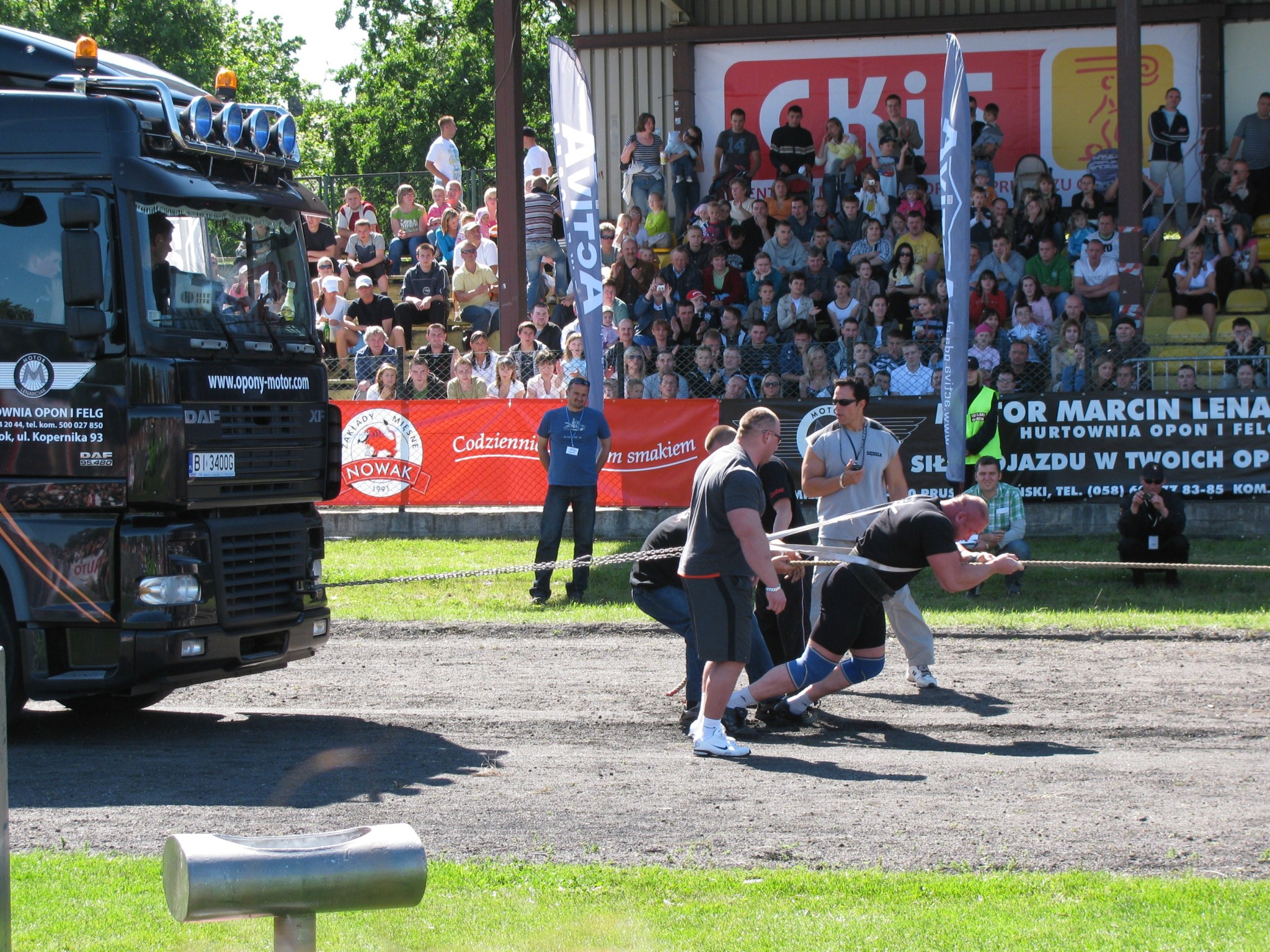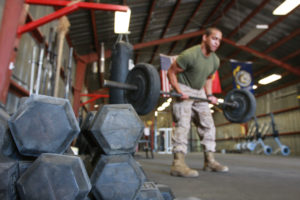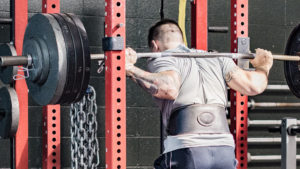Here is a complete breakdown of 6 Methods of Conditioning for Strength Athletes.
1st Half – Nerd Alert
Up to 11 minutes 52 seconds – it’s all about theory.
Grab a coffee and a notepad, pull up your nerd pants and get ready for some science.

2nd Half – For the Athlete
If you’re interested in application – and what to get cracking – skip to around 12 minutes and crack on.
BONUS –
Learn an extra 6th Method in the video that isn’t included below!
“Cardio kills gains.” “Anything above 5 is cardio”. We’ve all said or heard those types of phrases before. In blatant fear of performing any exercise that doesn’t involve a barbell and some heavy weight, powerlifters and other strength athletes may fall into the trap of becoming unfit and get out of breath when walking up and down stairs. Now many people fail to realise that whilst they may accept those downsides because, “I don’t give a shit about running on a treadmill”, it’s important to maintain at least some form of cardiovascular health and fitness. Let’s change the word cardio, to conditioning and get started!
AEROBIC FITNESS
I understand. If you’re a powerlifter or Olympic lifter, you only have to perform one rep maximal efforts. So why does cardiovascular fitness matter? Well indirectly, it has a role to play. Many of the benefits that cardio brings can indirectly help to improve your strength; with research linking aerobic fitness with one’s ability to recover from high intensity bouts of exercise due to increased blood flow enhancing the removal of lactic acid (3, 8, 12). This means, the fitter you are the faster you can recover between sets; therefore you can complete a greater volume in a given training session.
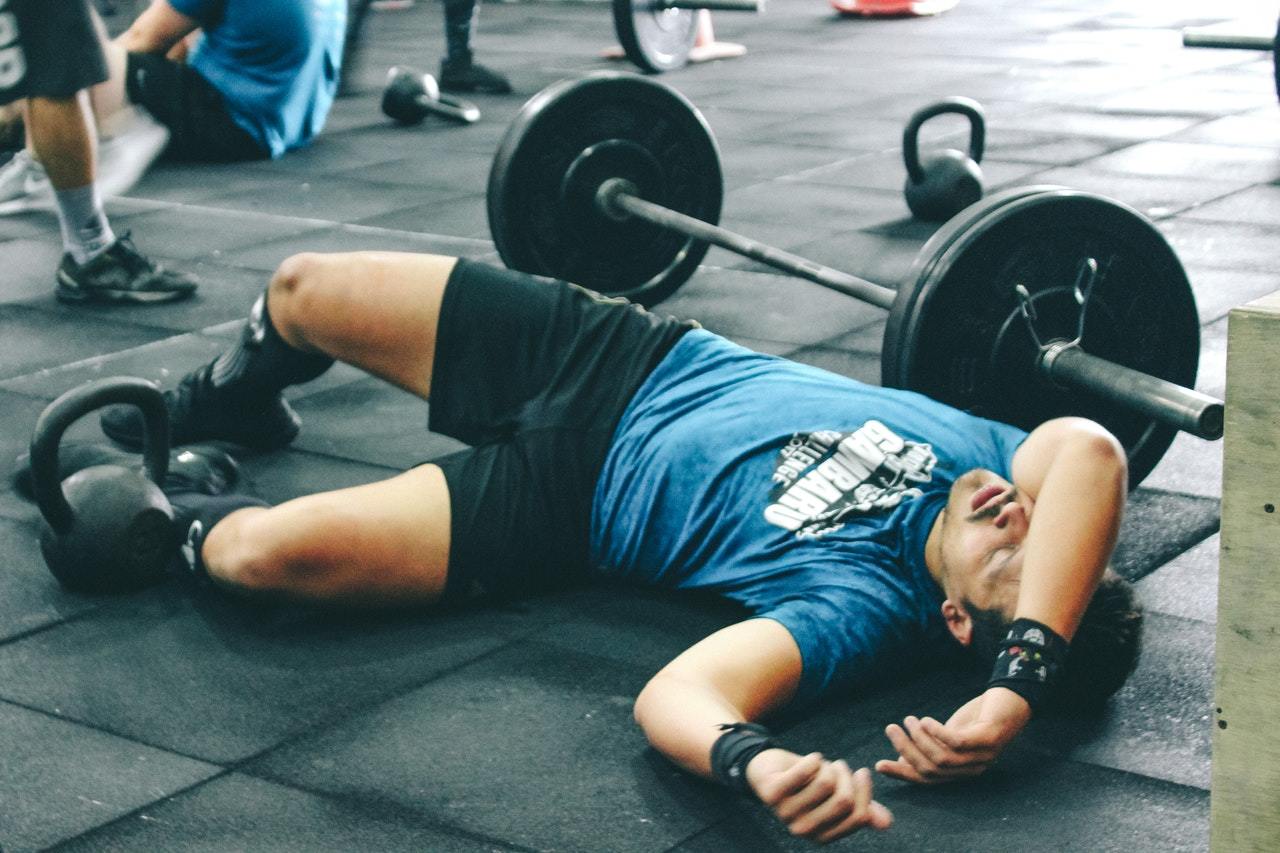
I understand the concept of running a treadmill may be mind-numbing. I’m not saying you should, far from it, as steady-state cardio has the potential to negatively influence your strength and muscle growth. However, there are simple methods listed below that may give you some insight into how to include conditioning into your training.
OTHER COMPONENTS OF FITNESS
It’s important to note that the components of fitness and performance that are overlooked far too often (e.g. flexibility, aerobic fitness), still have their place. All forms of sporting performance from ballet dancing right the way through to powerlifting involve the same principles. Whilst the emphasis will shift significantly in favour of specific components (e.g. maximal strength for powerlifting), to remain healthy, at least some attention should be cast onto the others.
Provided the intensity is high enough, the following conditioning methods may be performed alongside maximal strength training and yield improvements in both fitness components (14).
METHODS OF FITNESS
1) TIMED RESTS:
Particularly within sub-maximal work, timing your rests can make the training session feel a lot harder than usual. Now be wary, I wouldn’t do this within your competition movements, but rather do it with variations or bodybuilding movements. Ensuring that you perform a set on the minute/every 2 minutes is highly effective and used by many powerlifters/CrossFit athletes. I can virtually promise this will cause to get out of breath a little more than usual.
2) BARBELL COMPLEXES/COMBINATION LIFTS:
The holy grail of conditioning for strength athletes. Pick 2-4 barbell exercises that are normally classed as ‘assistance work’, pick a number of reps to perform at each and perform them in quick succession. Combination lifts are known to provide several benefits including:
- Improved neuro-muscular co-ordination.
- Increase work load and intensity.
- Increase cardiovascular benefits of free-weight training
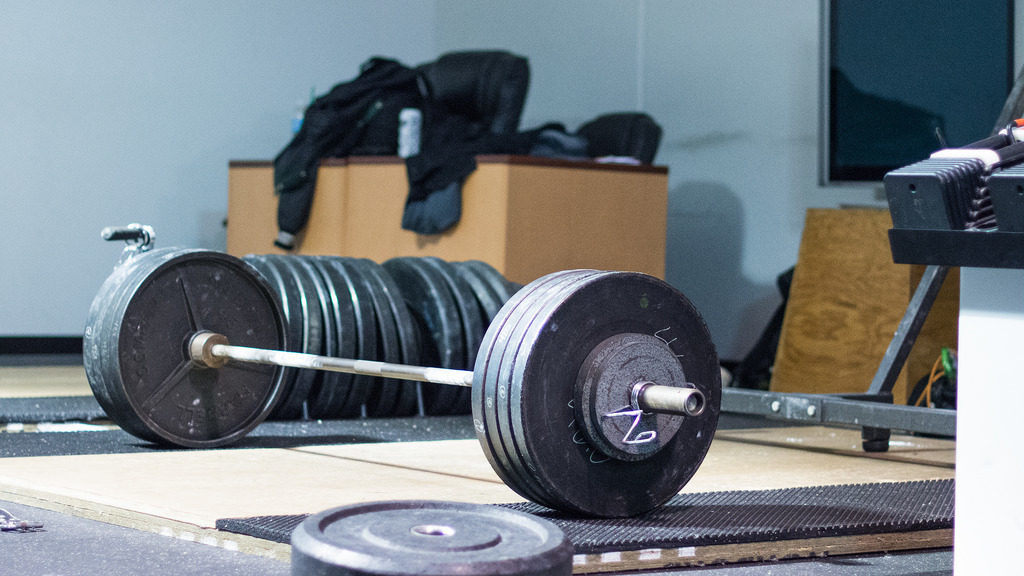
And many more (9). Barbell complexes also allow you to get extra work with the bar when performing certain movements, whilst making your training more time efficient. In addition, many strength and conditioning coaches have used this method of training in-season to maintain anaerobic work capacity and general strength/power (1).
Example: 5 reps at each (Repeat 3 times)
- Stiff legged deadlift
- Bent over row
- Military Press
3) STRONGMAN WORK
Performing strongman style movements can help you to increase your anaerobic endurance (13) whilst still lifting heavy and having fun. In fact, most strongman events consist of high levels of anaerobic fitness as it is. Try performing high rep log press and tell me that you’re not gasping for air after it. Research has also shown strongman style training to be extremely anaerobically demanding (2, 10) and is often considered an advanced training technique for developing fitness.
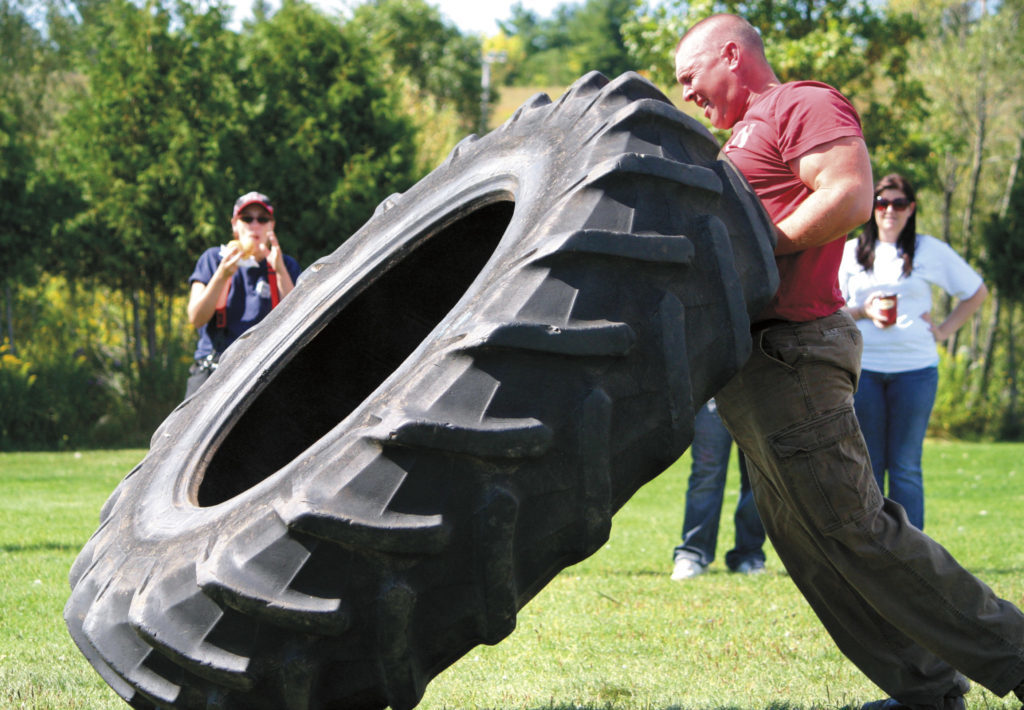
Whilst it’s far from being the only reason, I honestly believe this form of training is what often sets aside many strongmen from other strength athletes such as powerlifters.
4) INTERVAL TRAINING:
Pick anything. Literally any exercise. The bike, battle ropes, prowler, anything. Perform high-intensity bursts interspersed with rest periods. The length of time you exercise for is up to you, with research finding no differences between 30s work:30s rest and 2min work:2 min rest (5) Therefore it appears the work-rest ratio is more important. Whilst it’s largely up to you how you structure this, early research has shown a 1:4 work-rest ratio to result in increased activity of key enzymes involved in anaerobic glycolysis/lactate based exercise (11). In addition, studies have also found short-term sprint interval training to increase lactate tolerance and skeletal muscle carbohydrate metabolism (4) and even increased motor unit activation (7).
Although many people argue that concurrent training (increasing cardio and strength at the same time) doesn’t work, recent research has found no negative effects of sprint training on strength development in recreationally active men (6). The differences in research largely come from the variability of endurance/conditioning methods used. As mentioned previously, provided that the intensity is high and the duration is relatively low, there is no reason that the two training methods shouldn’t work hand in hand.
It may be inferred from the research that this form of conditioning may indirectly improve strength performance (provided it is structured correctly), by allowing you to accrue more submaximal volume during your training.
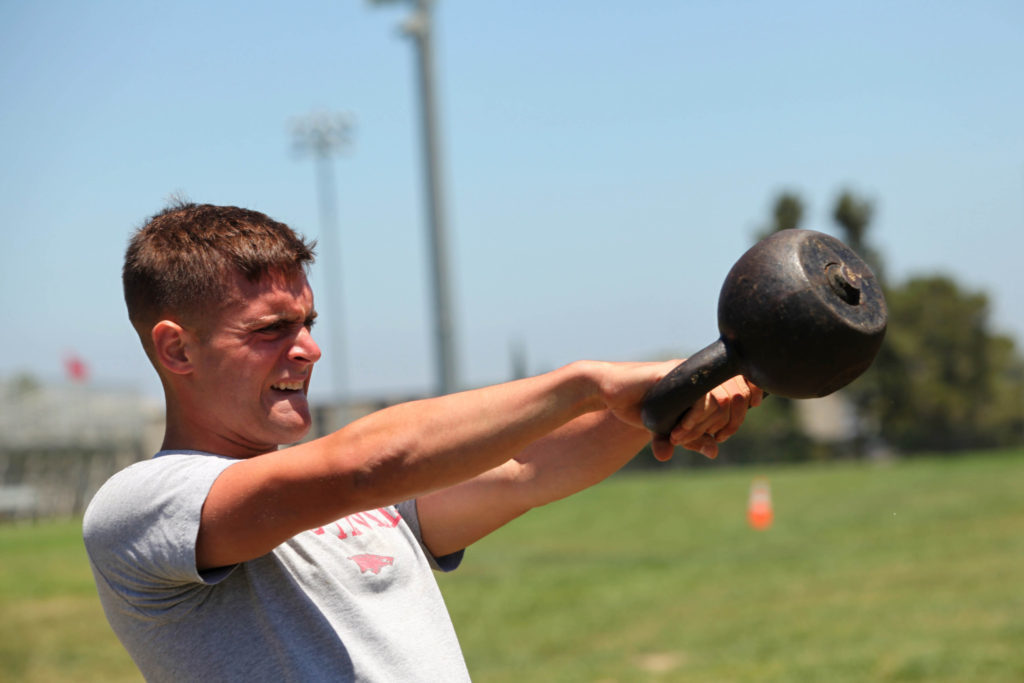
5) BLOOD SHUNTING COMBOS:
Pick one lower body exercise and one upper body exercise. Perform them back to back for higher reps (10-15 reps per exercise). The constant change from lower to upper body reduces the effects of localised muscular fatigue, meaning it’s less likely that your legs will give in before your lungs will. Examples include:
- Kettle-bell swings & Battle ropes
- Military Press & Goblet Squats
- Medicine Ball Slams & Bent Over Row
CORRECT PROGRAMMING:
I’m not going to talk about percentages of VO2 max or anything like that within this article. The key thing is, set a short duration of time and work your arse off during it. For now, it’s that simple.
Ideally you want to perform your conditioning on separate days, however I don’t expect you to be living in a gym. If the intensity is high enough, perform your high intensity conditioning after your competition movements but don’t make it the last thing you do in your session.
You don’t want fatigue to impact your technique or strength where it matters.
However, if it’s your last thing, you will suddenly start having less time for the gym and it will be the first thing to drop. Get it done, then you get to enjoy some of the fun stuff afterwards. Select one of the options above, and slot it between your competition lifts and assistance work.
REFERENCE LIST
- Armstrong, D. F. (1994). Combination Lifts for In-Season Training.Strength & Conditioning Journal, 16(4), 14-16.
- Berning, J. M., Adams, K. J., Climstein, M., & Stamford, B. A. (2007). Metabolic demands of” junkyard” training: pushing and pulling a motor vehicle.The Journal of Strength & Conditioning Research, 21(3), 853-856
- Bonen, A., & Belcastro, A. N. (1976). Comparison of self-selected recovery methods on lactic acid removal rates.Medicine and science in sports, 8(3), 176
- Burgomaster, K. A., Heigenhauser, G. J., & Gibala, M. J. (2006). Effect of short-term sprint interval training on human skeletal muscle carbohydrate metabolism during exercise and time-trial performance.Journal of applied physiology, 100(6), 2041-2047
- Burke, J., Thayer, R., & Belcamino, M. (1994). Comparison of effects of two interval-training programmes on lactate and ventilatory thresholds.British journal of sports medicine, 28(1), 18-21.
- Cantrell, G. S., Schilling, B. K., Paquette, M. R., & Murlasits, Z. (2014). Maximal strength, power, and aerobic endurance adaptations to concurrent strength and sprint interval training.European journal of applied physiology, 114(4), 763-771
- Creer, A. R., Ricard, M. D., Conlee, R. K., Hoyt, G. L., & Parcell, A. C. (2004). Neural, metabolic, and performance adaptations to four weeks of high intensity sprint-interval training in trained cyclists.International Journal of Sports Medicine, 25(02), 92-98
- Freund, H., Lonsdorfer, J., Oyono-Enguelle, S., Lonsdorfer, A., & Bogui, P. (1992). Lactate exchange and removal abilities in sickle cell patients and in untrained and trained healthy humans.Journal of Applied Physiology, 73(6), 2580-2587
- Javorek, I. S. (1998). The Benefits of Combination Lifts.Strength & Conditioning Journal, 20(3), 53-57.
- Keogh, J. W., Payne, A. L., Anderson, B. B., & Atkins, P. J. (2010). A brief description of the biomechanics and physiology of a strongman event: The tire flip.The Journal of Strength & Conditioning Research, 24(5), 1223-1228
- Roberts, A. D., Billeter, R., & Howald, H. (1982). Anaerobic muscle enzyme changes after interval training.International journal of sports medicine, 3(01), 18-21.
- Thoden, J. S., MacDougall, J. D., & Wilson, B. A. (1991). Testing aerobic power. Physiological testing of the high-performance athlete, 107-174.
- Waller, M., Piper, T., & Townsend, R. (2003). Strongman Events and Strength and Conditioning Programs.Strength & Conditioning Journal, 25(5), 44-52
- Wong, P. L., Chaouachi, A., Chamari, K., Dellal, A., & Wisloff, U. (2010). Effect of preseason concurrent muscular strength and high-intensity interval training in professional soccer players.The Journal of Strength & Conditioning Research, 24(3), 653-660


